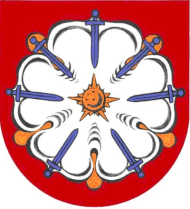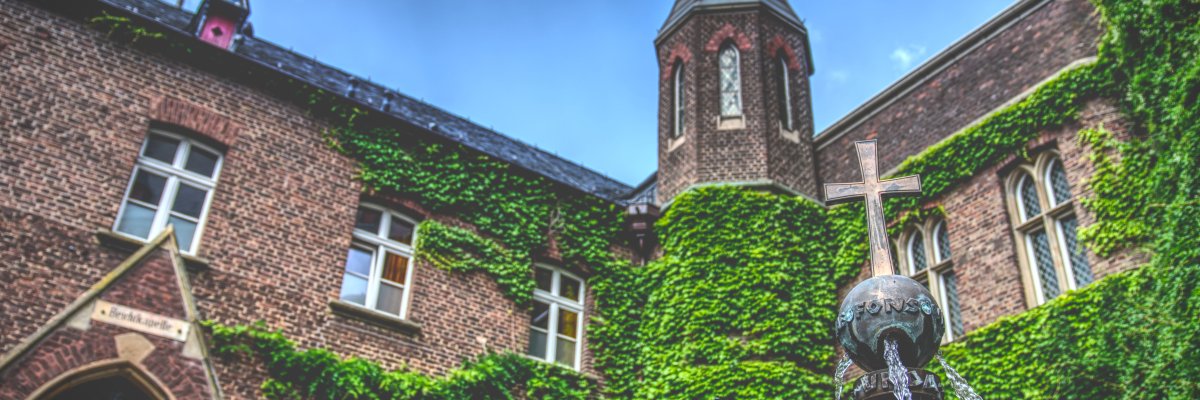Kleinkevelaer
At 164 hectares, Kleinkevelaer is the smallest district of the pilgrimage town of Kevelaer and lies between Wetten and Twisteden.
Coat of arms

With the medlar blossom, the municipality of Kleinkevelaer harks back to its origins in the old Niederamt Geldern. The seven swords on the medlar blossom indicate that the community once belonged to the parish of"St. Mary of the Seven Sorrows".
History
The name Kleinkevelaer suggests that it may have always been a part of the municipality of Kevelaer, although the development of the two villages was clearly separated for quite some time. The place name Kleinkevelaer is first mentioned in 1533 as part of a contract dated December 11, which regulated the grain grinding rights in the Wetten court. It was concluded by a representative of the Duke of Egmond, who held the Duchy of Geldern at the time, and the owner of the Wissen Castle Mill, Count von Loe. The court of Wetten was responsible for Kleinkevelaer until the French occupation in 1794.
The area of Kleinkevelaer was settled much earlier, in the Middle Ages. The first farms were located on the Aachen - Jülich - Nijmegen trade route, which has been mapped since the Middle Ages and which also formed the border between Twisteden and the Kleinkevelaer area from 1418 to 1969. Kleinkevelaer belonged to the parish of Walbeck until 1571, then to the new parish of Twisteden.
There have been around 12 houses in Kleinkevelaer since the 16th century. Even in the 19th century, the number of houses remained constant - some disappeared, others were added. Kleinkevelaer was assigned to the newly established district of Geldern as an independent municipality in 1816. In 1824, Kleinkevelaer had 71 inhabitants, 21 of whom were gainfully employed, but mainly in agriculture. Kleinkevelaer's essentially agricultural business structure changed when the Kleinkevelaer municipal council decided to make 5 hectares of municipal forest available for the promotion of vegetable and fruit growing. This marked the beginning of the horticultural era in Kleinkevelaer, the village's main industry in the 20th century.
Since the first decade of the twentieth century, both the municipality of Twisteden and the municipality of Kevelaer (since 1949 the town of Kevelaer) tried in vain to incorporate Kleinkevelaer. After more than 150 years of independence, the 113 inhabitants of the municipality of Kleinkevelaer were incorporated into the town of Kevelaer as part of the municipal reform in 1969. With the joint construction of a chapel in 2002, the inhabitants of Kleinkevelaer created a village center. Kleinkevelaer won the bronze plaque in the national "Our village has a future" competition in 2008.

